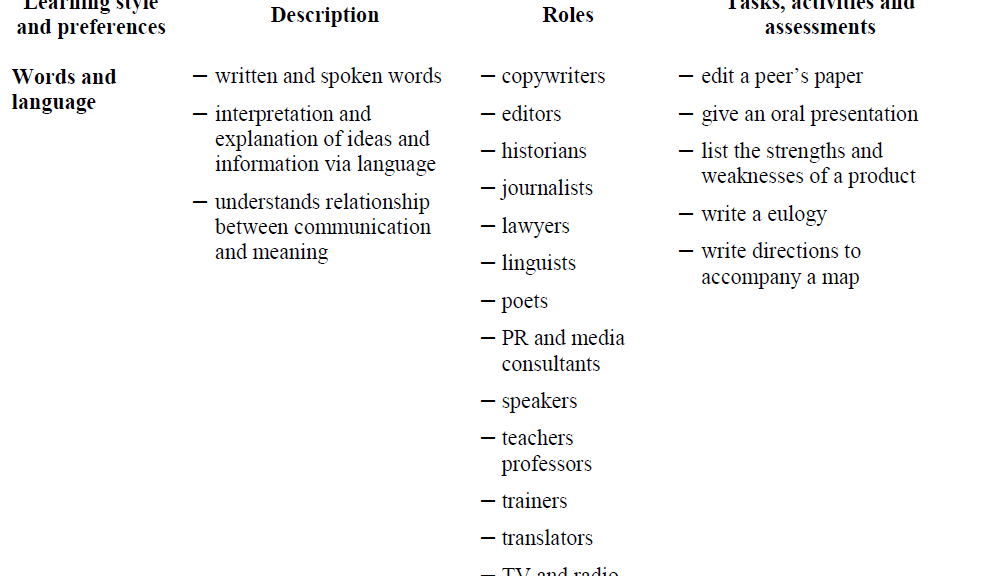
9 Types of intelligences by Howard Gardner – Theory of Multiple Intelligences
To know about 12 Ways of Learning, click the link.
Many of us are familiar with three general categories in which people learn: visual learners, auditory learners, and kinesthetic learners. Beyond these three general categories, many theories of and approaches toward human potential have been developed. Among them is the theory of multiple intelligences, developed by Howard Gardner, Ph.D., Professor of Education at Harvard University.
Gardner’s early work in psychology and later in human cognition and human potential led to the development of the initial six intelligences. Today there are nine intelligences and the possibility of others may eventually expand the list. These intelligences (or competencies) relate to a person’s unique aptitude set of capabilities and ways they might prefer to demonstrate intellectual abilities.
Gardner’s Multiple Intelligences
- Verbal-linguistic intelligence (well-developed verbal skills and sensitivity to the sounds, meanings and rhythms of words)
- Logical-mathematical intelligence (ability to think conceptually and abstractly, and capacity to discern logical and numerical patterns)
- Spatial-visual intelligence (capacity to think in images and pictures, to visualize accurately and abstractly)
- Bodily-kinesthetic intelligence (ability to control one’s body movements and to handle objects skillfully)
- Musical intelligences (ability to produce and appreciate rhythm, pitch and timber)
- Interpersonal intelligence (capacity to detect and respond appropriately to the moods, motivations and desires of others)
- Intrapersonal (capacity to be self-aware and in tune with inner feelings, values, beliefs and thinking processes)
- Naturalist intelligence (ability to recognize and categorize plants, animals and other objects in nature)
- Existential intelligence (sensitivity and capacity to tackle deep questions about human existence such as, What is the meaning of life? Why do we die? How did we get here?
(Source: Thirteen ed online, 2004)
Human potential can be tied to one’s preferences to learning…

Human Potential
Human potential can be tied to one’s preferences to learning; thus, Gardner’s focus on human potential lies in the fact that people have a unique blend of capabilities and skills (intelligences). This model can be used to understand “overall personality, preferences and strengths” (businessballs.com, n.d.). Gardner asserts that people who have an affinity toward one of the intelligences do so in concert with the other intelligences as “they develop skills and solve problems” (businessballs.com, 2009).
Instruction which is designed to help students develop their strengths can also trigger their confidence to develop areas in which they are not as strong.
People have different strengths and intelligences. For example, students who are “interviewed” as a means to gain access to a course may be mis-labeled as being less than desirable because of inappropriate assessment (poorly written interview questions, bias toward a perceived “perfect student,” and other narrow criteria). “In life, we need people who collectively are good at different things. A well-balanced world, and well-balanced organizations and teams, are necessarily comprised of people who possess different mixtures of intelligences. This gives that group a fuller collective capacity than a group of identical able specialists”
(businessballs.com, 2009).
Gardner’s multiple intelligences theory can be used for curriculum development, planning instruction, selection of course activities, and related assessment strategies. Instruction which is designed to help students develop their strengths can also trigger their confidence to develop areas in which they are not as strong. Students’ multiple learning preferences can be addressed when instruction includes a range of meaningful and appropriate methods, activities, and assessments.
Summary
In summary, integrate educational theories, teaching strategies, and other pedagogic tools in meaningful and useful ways to better address the needs of students. Gardner himself asserts that educators should not follow one specific theory or educational innovation when designing instruction but instead employ customized goals and values appropriate to their teaching and student needs. Addressing the multiple intelligences and potential of students can help instructors personalize their instruction and methods of assessment.
Gardner’s Multiple Intelligences
Table 1 below highlights the primary seven intelligences with further details on their attributes. Refer to this chart as you prepare instruction, related activities, and assessments.
Adapted from businessballs.com (2009)
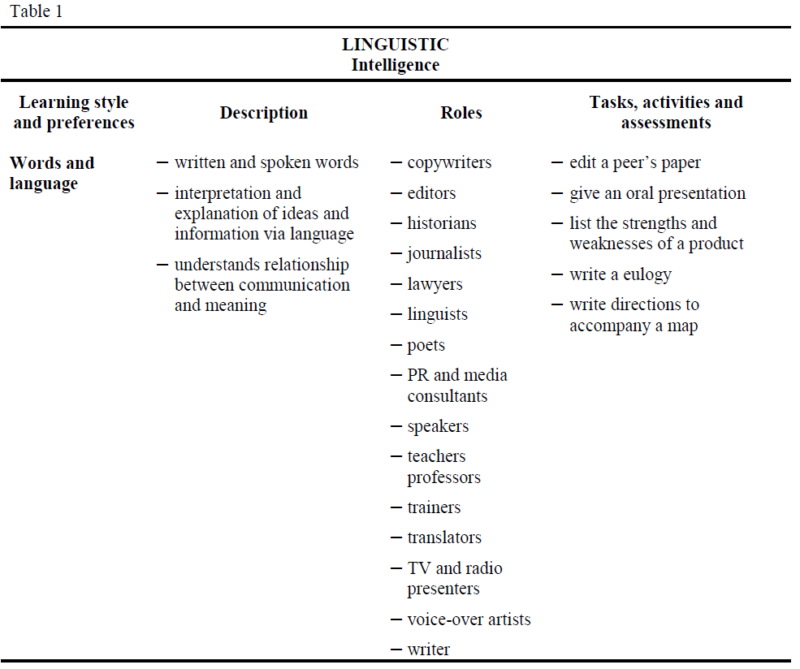
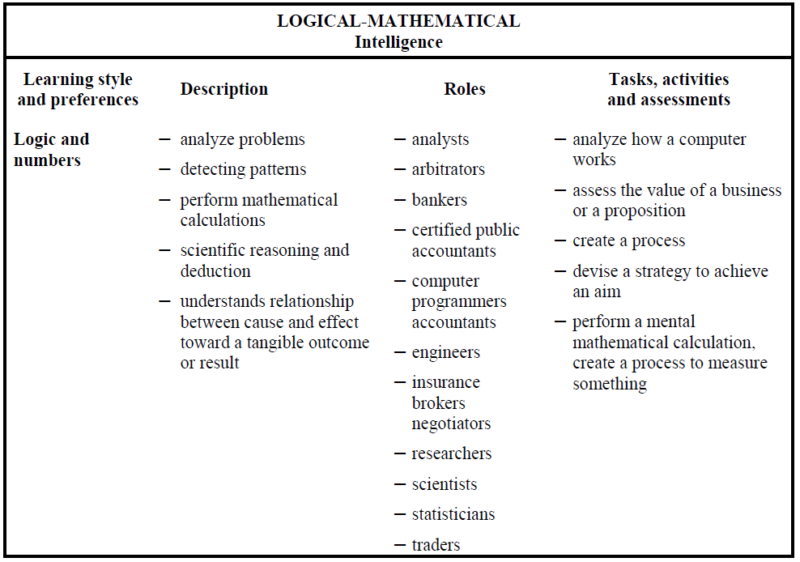
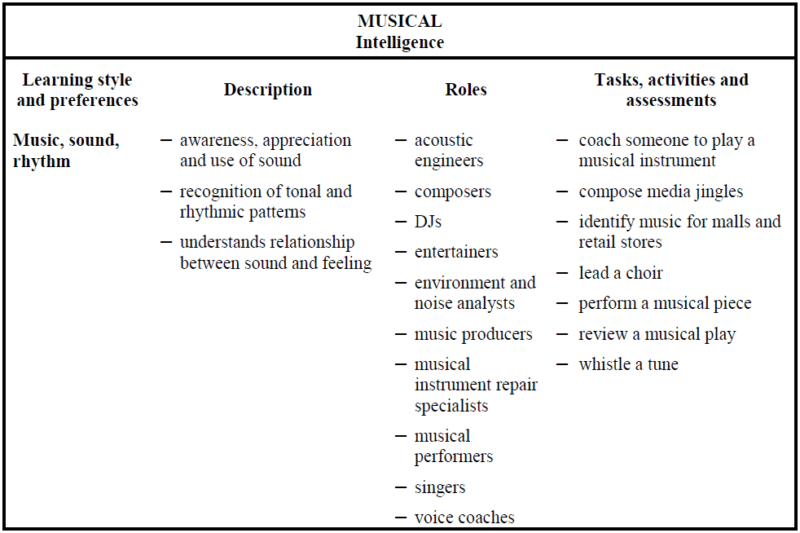
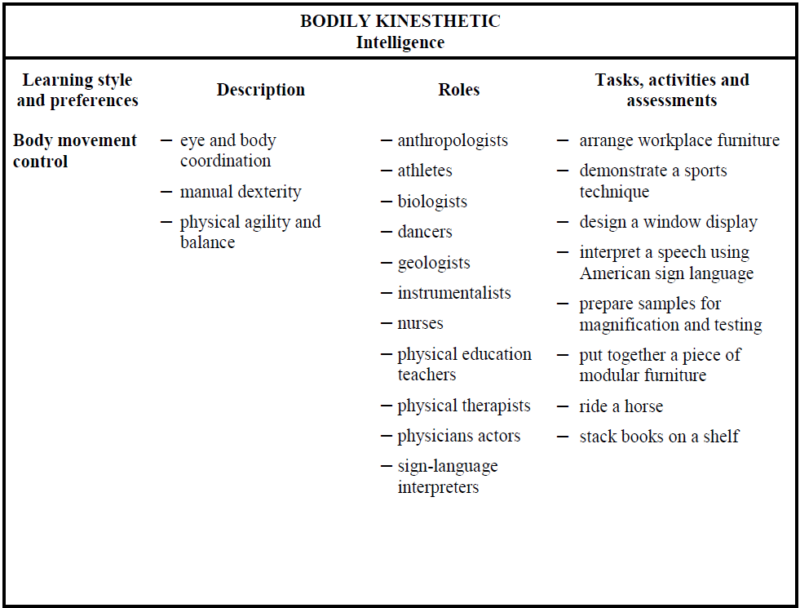
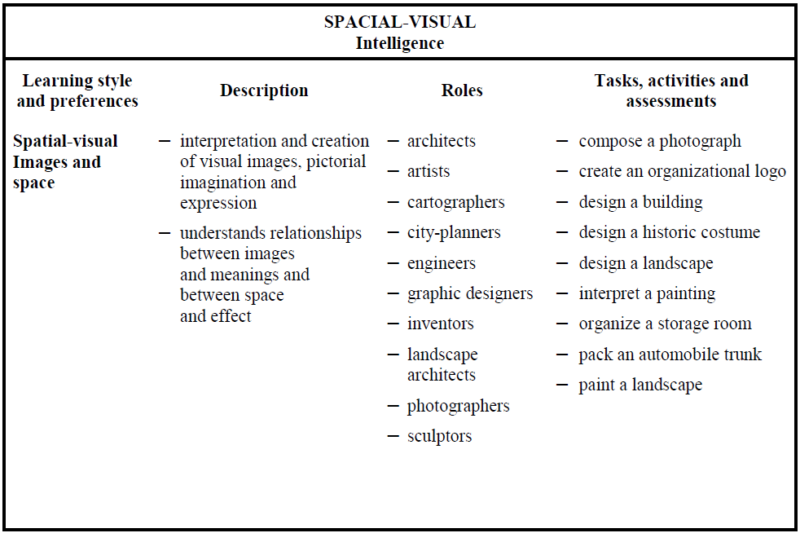
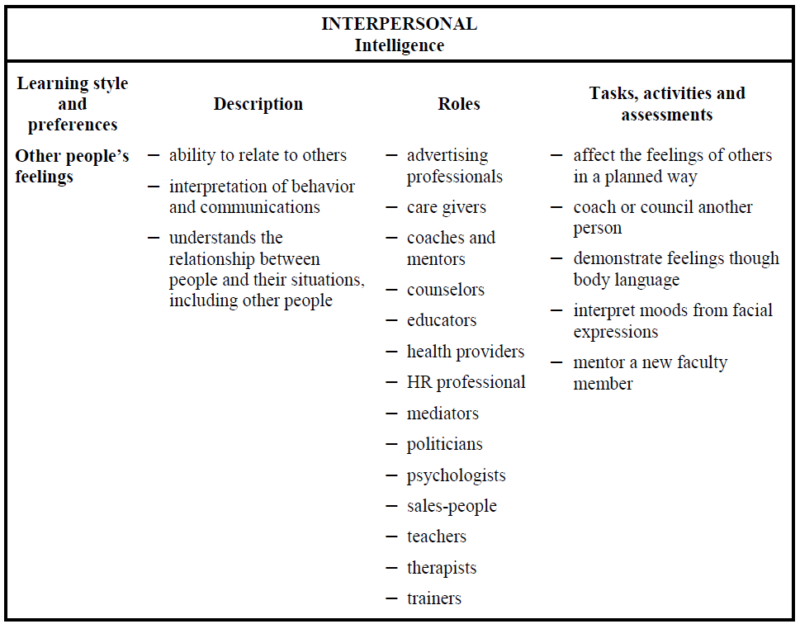
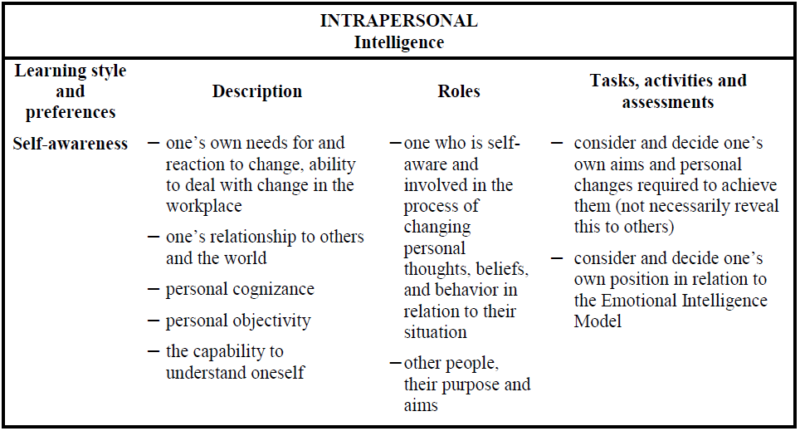
References
businessballs.com (2009). Howard Gardner’s multiple intelligences.
http://www.businessballs.com/howardgardnermultipleintelligences.htm
Thirteen ed online (2004). Tapping into multiple intelligences.
http://www.thirteen.org/edonline/concept2class/mi/index.html
Selected Resources
Armstrong, T. (2010). Multiple intelligences.
http://www.thomasarmstrong.com/multiple_intelligences.htm
Howard Gardner. (2010). Multiple intelligences.
http://www.howardgardner.com/MI/mi.html



